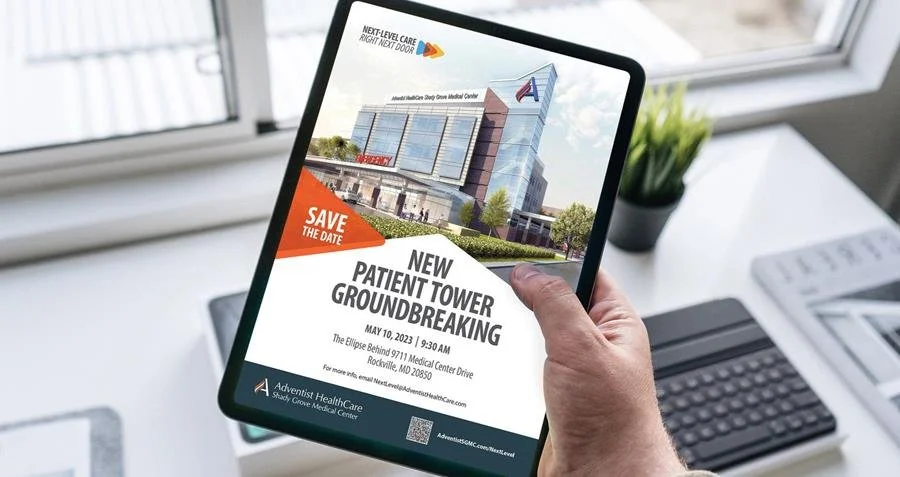Graphic standards are designed to create visual cohesiveness for your brand. But their usefulness can vary widely depending on how old they are, how robust they are and how they have responded to changes in your world.
Here are six questions to ask to see if your graphic standards are still serving you well—or need an update.
Is the logo practical?
Does it perform on a lapel pin and on the Web as well as it does on an outdoor board? In color or black and white? Professional designers test their recommendations in these venues before making them, yet we still find logos out there that are difficult to deploy in different applications.
Is the logo footprint unwieldy?
Square, round or odd-shaped logos often get problematic because their footprint doesn’t integrate well into an application. A discrete, contained footprint is often the most practical one for a logo.
Do you have enough font options?
Different applications require different types of fonts. Fonts that work well on an outdoor board aren’t always the same ones that work well on the Web. So be sure you have enough font options for all of your applications.
Is there a standard font included for the non-designer?
Hundreds or thousands of people in your company will be trying to work with these standards from the comfort of their own laptops and desktop computers, all armed with the standard fonts that come with their computers. You should have at least one of these standard fonts as an option in your recommended fonts—or it could end up being very costly to purchase specialty fonts for every user.
Do you find yourself struggling with the colors?
Maybe the palette doesn’t translate well to Web applications. Or you find there isn’t enough contrast in the colors to provide readable print or outdoor creative. Or there aren’t enough colors to serve your needs. Or perhaps the colors are starting to feel dated. Colors do go out of style, particularly those that aren’t classic colors, so if yours aren’t looking fresh, add some new ones.
Can your logo be built in four-color vs. adding Pantone spot colors?
A logo that requires Pantone spot color can add cost, because it requires adding another ink to a four-color process. Designing one that can be built using four-color process can save you printing costs.
If these are problems, you can update your standards—you don’t have to completely recreate them to keep them useful. Add colors, fonts and applications as you see the need. While it’s important to have consistency across a brand, brands migrate visually with time and this isn’t necessarily bad. Remember that while it’s important to preserve consistency, it is ultimately as important that your visual brand works for you. Tweaking it as your business needs change should be expected.
What problems are you having with your graphic standards that could be improved with a little tweaking?
10 Guidelines for Naming Your Business
Naming your new product, service or business is about so much more than whether you like the name. Each word in the name carries with it meanings—some of which are pervasive and others which are nuanced.
Here are 10 guidelines we use when working with clients looking for a name:
In most cases, names that make it immediately clear what the business is will help your prospective customers engage sooner. If I’m looking for a florist and words like “flowers” or “florist” are in the name, I immediately see that this is the kind of business I’m searching for. There are exceptions, of course, but we know that when the brain spots a word it recognizes, the process of searching is made easier.
The name should be distinctive and memorable.
The name should import or evoke the desired brand attributes. If your business is competing in and industry known for fun, for example, then the name needs to evoke that.
Take into consideration what its acronym spells (in any language).
The name should be easy to pronounce, as sometimes it will be only heard and not seen (think audio-only ads).
The name should both sound good and look good visually on an ad, billboard, website or in a logo.
Check domain name availability and buy it quickly once you have consulted your legal counsel. And here’s a word of caution. Some domain sites actually buy-up names you search for as part of their business strategy, so you can look up their availability one day and later come back to find it is no longer available—except if you want to pay the higher price they’ve now attached to it.
If it’s a made-up word—like OptiTru or XyPhil—you’ll need the budget to teach the public what it means. Made-up names don’t signal any reference point in the reader’s brain. This can be good, if you want to create the brand from ground up—but bad if you don’t have a lot of money to spend.
If there will be multiple locations, make the name flexible to accommodate those.
If it’s a sub-brand, think through the implications of its relationship—visually and otherwise—to the master brand.
The Overlooked Sign: Increase Your Business With Better Signage
We designed a window graphic for this medical group in Colorado in an effort help differentiate it from its retail neighbors—and promote the clinic. Walk-in business increased by 333% the first two months, and those who set up appointments because they saw the sign while driving by went up by 380%.
If you’re spending money on media buys but not looking at how well your own signage is working, maybe it’s time to take a second look. It could be your most effective—and least expensive—ad ever.








